Let’s pretend that you work in a windowless office on Madison, or Lex, or Park in the spring of 1954, and you’re hurrying to Grand Central to avoid the rush back to New Rochelle, or Hempstead, or Weehawken. Walking through the Main Concourse with its Beaux Arts arches and its bronzed clock atop the ticketing booth, its cosmic green ceiling fresco depicting the constellations slowly stained by the accumulated cigarette smoke, you decide to purchase an egg-salad sandwich from a vendor near the display with its ticking symphony of arrivals and departures. You glance down at a stack of slender magazines held together with thick twine. The cover illustration is of a buxom brunette wearing a yellow pa’u skirt and hauling an unconscious astronaut in a silver spacesuit through a tropical forest while fur-covered extraterrestrials look on between the palm trees. It’s entitled Universe Science Fiction. And if you were the sort of Manhattan worker who, after clocking in eight hours at the Seagram Building or the Pan Am Building, settles into the commuter train’s seat—after loosening his black-knit tie and lighting a Lucky Strike while watching Long Island go by—ready to be immersed in tales of space explorers and time travelers, then perhaps you parted with a quarter so that Universe Science Fiction’s cheap print would smudge your gray flannel suit. The sort of reading you’d want to cocoon yourself in with nothing outside the text. As advertised, you find a story of just a few hundred words entitled “The Immortal Bard,” by a writer named Isaac Asimov.
 Reprinted three years later in Earth Is Room Enough, “The Immortal Bard” is set among sherry-quaffing, tweedy university faculty at their Christmas party, where a boozed-up physicist named Phineas Welch corners the English professor Scott Robertson, and explains how he’s invented a method of “temporal transference” able to propel historical figures into the present. Welch resurrects Archimedes, Galileo, and Isaac Newton, but “They couldn’t get used to our way of life… They got terribly lonely and frightened. I had to send them back.” Despite their genius, their thought wasn’t universal, and so Welch conjures William Shakespeare, believing him to be “someone who knew people well enough to be able to live with them centuries away from his own time.” Robertson humors the physicist, treating such claims with a humanist’s disdain, true to C.P. Snow’s observation in The Two Cultures and the Scientific Revolution that “at one pole we have the literary intellectuals, at the other scientists… Between the two a gulf of mutual incomprehension.” Welch explains that the Bard was surprised that he was still taught and studied, after all, he wrote Hamlet in a few weeks, just polishing up an old plot. But when introduced to literary criticism, Shakespeare can’t comprehend anything. “God ha’ mercy! What cannot be racked from words in five centuries? One could wring, methinks, a flood from a damp clout!” So, Welch enrolls him in a Shakespeare course, and suddenly Robertson begins to fear that this story isn’t just a delusion, for he remembers the bald man with a strange brogue who had been his student. “I had to send him back,” Welch declares, because our most flexible and universal of minds had been humiliated. The physicist downed his cocktail and mutters “you poor simpleton, you flunked him.”
Reprinted three years later in Earth Is Room Enough, “The Immortal Bard” is set among sherry-quaffing, tweedy university faculty at their Christmas party, where a boozed-up physicist named Phineas Welch corners the English professor Scott Robertson, and explains how he’s invented a method of “temporal transference” able to propel historical figures into the present. Welch resurrects Archimedes, Galileo, and Isaac Newton, but “They couldn’t get used to our way of life… They got terribly lonely and frightened. I had to send them back.” Despite their genius, their thought wasn’t universal, and so Welch conjures William Shakespeare, believing him to be “someone who knew people well enough to be able to live with them centuries away from his own time.” Robertson humors the physicist, treating such claims with a humanist’s disdain, true to C.P. Snow’s observation in The Two Cultures and the Scientific Revolution that “at one pole we have the literary intellectuals, at the other scientists… Between the two a gulf of mutual incomprehension.” Welch explains that the Bard was surprised that he was still taught and studied, after all, he wrote Hamlet in a few weeks, just polishing up an old plot. But when introduced to literary criticism, Shakespeare can’t comprehend anything. “God ha’ mercy! What cannot be racked from words in five centuries? One could wring, methinks, a flood from a damp clout!” So, Welch enrolls him in a Shakespeare course, and suddenly Robertson begins to fear that this story isn’t just a delusion, for he remembers the bald man with a strange brogue who had been his student. “I had to send him back,” Welch declares, because our most flexible and universal of minds had been humiliated. The physicist downed his cocktail and mutters “you poor simpleton, you flunked him.”
 “The Immortal Bard” doesn’t contain several of the details that I include—no sherry, no tweed (though there are cocktails). We have no sense of the characters’ appearances; Welch’s clothes are briefly described, but Robertson is a total blank. A prolific author, penning over 1,000 words a day, by Asimov’s death in 1992 he had published more than 500 books across all categories of the Dewey Decimal System (including Asimov’s Guide to Shakespeare). Skeletal parsimony was Asimov’s idiom; in his essay “On Style” from Who Done It?, coedited with Alice Laurence, he described his prose as “short words and simple sentence structure,” bemoaning that this characteristic “grates on people who like things that are poetic, weighty, complex, and, above all, obscure.” Had his magisterial Foundation been about driving an ambulance in the First World War rather than a galactic empire spanning billions of light years, it’d be the subject of hundreds of dissertations. If his short story “The Nine Billion Names of God” had been written in Spanish, then he’d be Jorge Luis Borges; had Asimov’s “The Last Question” originally been in Italian, then he’d be Italo Calvino (American critics respect fantasy in an accent, but then they call it “magical realism”). As it was, critical evaluation was more lackluster, with the editors of 1981’s Dictionary of Literary Biography claiming that since Asimov’s stories “clearly state what they mean in unambiguous language [they] are… difficult for a scholar to deal with because there is little to be interpreted.”
“The Immortal Bard” doesn’t contain several of the details that I include—no sherry, no tweed (though there are cocktails). We have no sense of the characters’ appearances; Welch’s clothes are briefly described, but Robertson is a total blank. A prolific author, penning over 1,000 words a day, by Asimov’s death in 1992 he had published more than 500 books across all categories of the Dewey Decimal System (including Asimov’s Guide to Shakespeare). Skeletal parsimony was Asimov’s idiom; in his essay “On Style” from Who Done It?, coedited with Alice Laurence, he described his prose as “short words and simple sentence structure,” bemoaning that this characteristic “grates on people who like things that are poetic, weighty, complex, and, above all, obscure.” Had his magisterial Foundation been about driving an ambulance in the First World War rather than a galactic empire spanning billions of light years, it’d be the subject of hundreds of dissertations. If his short story “The Nine Billion Names of God” had been written in Spanish, then he’d be Jorge Luis Borges; had Asimov’s “The Last Question” originally been in Italian, then he’d be Italo Calvino (American critics respect fantasy in an accent, but then they call it “magical realism”). As it was, critical evaluation was more lackluster, with the editors of 1981’s Dictionary of Literary Biography claiming that since Asimov’s stories “clearly state what they mean in unambiguous language [they] are… difficult for a scholar to deal with because there is little to be interpreted.”
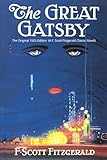
 Asimov’s dig comes into sharper focus having admitted that “The Immortal Bard” was revenge on those professors who’d rankled him by misinterpreting stories—his and other’s. A castigation of the discipline as practiced in 1954, which meant a group that had dominated the study of literature for three decades—the New Critics. With their rather uninspired name, the New Critics—including I.A. Richards, John Crow Ransome, Cleanth Brooks, Allen K. Tate, Robert Penn Warren, William Empson, and a poet of some renown named T.S. Eliot (among others)—so thoroughly revolutionized how literature is studied that explaining why they’re important is like explaining air to a bird. From Yale, Cambridge, and Kenyon, the New Criticism would disseminate, and then it trickled down through the rest of the educational system. If an English teacher asked you to analyze metaphors in Shakespeare’s “Sonnet 12″—that was because of the New Critics. If an AP instructor asked you to examine symbolism in F. Scott Fitzgerald’s The Great Gatsby—that was because of the New Critics. If a college professor made you perform a rhetorical analysis of Virginia Woolf’s Mrs. Dalloway—that was because of the New Critics. Most of all, if anyone ever made you conduct a “close reading,” it is the New Critics who are to blame.
Asimov’s dig comes into sharper focus having admitted that “The Immortal Bard” was revenge on those professors who’d rankled him by misinterpreting stories—his and other’s. A castigation of the discipline as practiced in 1954, which meant a group that had dominated the study of literature for three decades—the New Critics. With their rather uninspired name, the New Critics—including I.A. Richards, John Crow Ransome, Cleanth Brooks, Allen K. Tate, Robert Penn Warren, William Empson, and a poet of some renown named T.S. Eliot (among others)—so thoroughly revolutionized how literature is studied that explaining why they’re important is like explaining air to a bird. From Yale, Cambridge, and Kenyon, the New Criticism would disseminate, and then it trickled down through the rest of the educational system. If an English teacher asked you to analyze metaphors in Shakespeare’s “Sonnet 12″—that was because of the New Critics. If an AP instructor asked you to examine symbolism in F. Scott Fitzgerald’s The Great Gatsby—that was because of the New Critics. If a college professor made you perform a rhetorical analysis of Virginia Woolf’s Mrs. Dalloway—that was because of the New Critics. Most of all, if anyone ever made you conduct a “close reading,” it is the New Critics who are to blame.
According to the New Critics, their job wasn’t an aesthetic one, parsing what was beautiful about literature or how it moved people (the de facto approach in Victorian classrooms, and still is in popular criticism), but an analytical one. The task of the critic was scientific—to understand how literature worked, and to be as rigorous, objective, and meticulous as possible. That meant bringing nothing to the text but the text. Neither the critic’s concerns—or the author’s—mattered more than the placement of a comma, the connotation of a particular word, the length of a sentence. True that they often unfairly denigrated worthy writing because their detailed explications only lent themselves to certain texts. Poetry was elevated above prose; the metaphysical over the Romantic; the “literary” over genre. But if the New Critics were snobbish in their preferences, they also weren’t wrong that there was utility in the text’s authority. W.K. Wimsatt and Monroe Beardsley argued in a 1946 issue of The Sewanee Review that the “design or intention of the author is neither available nor desirable as a standard for judging the success of a work of literary art.” In a more introspective interview, Asimov admitted that what inspired “The Immortal Bard” was his inadequacy at answering audience questions about his own writing. Asimov was right that he deserved more attention from academics, but wrong in assuming that he’d know more than them. The real kicker of the story might be that Shakespeare actually earned his failing grade.
When New Critics are alluded to in popular culture, it’s as anal-retentive killjoys. Maybe the most salient (and unfair) drumming the New Critics received was in the 1989 (mis)beloved Peter Weir film Dead Poets Society, featuring Robin Williams’s excellent portrayal of John Keating, an English teacher at elite Welton Academy in 1959. Keating arrives at the rarefied school urging the boys towards carpe diem, confidently telling them that the “powerful play goes on, and you may contribute a verse.” With vitality and passion, Keating introduces the students to Tennyson, Whitman, and Thoreau, and the audience comprehends that this abundantly conservative curriculum is actually an act of daring, at least when contrasted to the New Critical orthodoxy that had previously stultified the children of millionaires. On his first day, wearing corduroy with leather arm patches, Keating asks a student to recite from their approved textbook by Professor J. Evans Pritchard. In a monotone, the student reads “If the poem’s score for perfection is plotted on the horizontal of a graph and its importance is plotted on the vertical, then calculating the total area of the poem yields the measure of its greatness.” We are to understand that after the cold scalpel of analysis cuts the warm flesh of the poem—that if it wasn’t already dead—then it certainly perished thereafter. Keating pronounces the argument to be “Excrement,” and demands his students rip the page out, so that a film that defends the humanities depicts the destruction of books. “But poetry, beauty, romance, love, these are what we stay alive for,” Keating tells his charges, and how could dusty Dr. Pritchard compete with a Cartesian coordinate plane ?
The fictional Pritchard’s essay is an allusion to Brook and Warren’s influential 1938 Understanding Poetry, where they write that “Poetry gives us knowledge… of ourselves in relation to the world of experience, and to that world considered… in terms of human purposes and values.” Not soaring in its rhetoric, but not the cartoon from Dead Poets Society either, though also notably not what Keating advocated. He finds room for poetry, beauty, romance, and love, but neglects truth. What Keating champions isn’t criticism, but appreciation, and while the former requires rigor and objectivity, the latter only needs enjoyment. Appreciation in and of itself is fine—but it doesn’t necessarily ask anything of us either. Kevin Detmar in his defenestration of the movie from The Atlantic writes that “passion alone, divorced from the thrilling intellectual work of real analysis, is empty, even dangerous.” Pontificating in front of his captive audience, Keating recites (and misinterprets) poems from Robert Frost and Percy Shelley, demanding that “When you read, don’t just consider what the author thinks, consider what you think.” Estimably sensible, for on the surface an enjoinder towards critical thought and independence seems reasonable, certainly when reading an editorial, or a column, or policy proposal—but this is poetry.
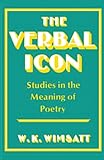 His invocation is diametrically opposed to another New Critical principle, also defined by Wimsatt and Beardsley in The Sewanee Review in 1946, and further explicated in their book The Verbal Icon: Studies in the Meaning of Poetry, published the same year as Asimov’s story. Wimsatt and Beardsley say that genuine criticism doesn’t “talk of tears; prickles or other physiological symptoms, of feeling angry, joyful, hot, cold, or intense, or of vaguer states of emotional disturbance, but of shades of distinction and relation between objects of emotion.” In other words, it’s not all about you. Being concerned with the poem’s effect tells us everything about the reader but little about the poem. Such a declaration might seem arid, sterile, and inert—especially compared to Keating’s energy—and yet there is paradoxically more life in The Verbal Icon. “Boys, you must strive to find your own voice,” Keating tells a room full of the children of wealth, power, and privilege, who will spend the whole 20th century ensuring that nobody has the option not to hear them. Rather than sounding the triumphant horn of independence, this is mere farting on the bugle of egoism. Poetry’s actual power is that it demands we shut up and listen. Wimsatt and Beardsley aren’t asking the reader not to be changed by a poem—it’s the opposite. They’re demanding that we don’t make an idol from our relative, contingent, arbitrary reactions. A poem is a profoundly alien place, a foreign place, a strange place. We do not go there to meet ourselves; we go there to meet something that doesn’t even have a face. Keating treats poems like mirrors, but they’re windows.
His invocation is diametrically opposed to another New Critical principle, also defined by Wimsatt and Beardsley in The Sewanee Review in 1946, and further explicated in their book The Verbal Icon: Studies in the Meaning of Poetry, published the same year as Asimov’s story. Wimsatt and Beardsley say that genuine criticism doesn’t “talk of tears; prickles or other physiological symptoms, of feeling angry, joyful, hot, cold, or intense, or of vaguer states of emotional disturbance, but of shades of distinction and relation between objects of emotion.” In other words, it’s not all about you. Being concerned with the poem’s effect tells us everything about the reader but little about the poem. Such a declaration might seem arid, sterile, and inert—especially compared to Keating’s energy—and yet there is paradoxically more life in The Verbal Icon. “Boys, you must strive to find your own voice,” Keating tells a room full of the children of wealth, power, and privilege, who will spend the whole 20th century ensuring that nobody has the option not to hear them. Rather than sounding the triumphant horn of independence, this is mere farting on the bugle of egoism. Poetry’s actual power is that it demands we shut up and listen. Wimsatt and Beardsley aren’t asking the reader not to be changed by a poem—it’s the opposite. They’re demanding that we don’t make an idol from our relative, contingent, arbitrary reactions. A poem is a profoundly alien place, a foreign place, a strange place. We do not go there to meet ourselves; we go there to meet something that doesn’t even have a face. Keating treats poems like mirrors, but they’re windows.
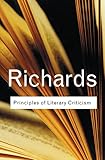
 With austerity and sternness, New Criticism is an approach that with sola Scriptura exactitude understood nothing above, below, behind, or beyond the text. Equal parts mathematician and mystic, the New Critic deigns objectivity the preeminent goal, for in the novel, or poem, or play properly interpreted she has entered a room separate, an empire of pure alterity. An emphasis on objectivity doesn’t entail singularity of interpretation, for though the New Critics believed in right and wrong readings, good and bad interpretations, they reveled in nothing as much as ambiguity and paradox. But works aren’t infinite. If a text can be many things, it also can’t mean everything. What is broken are the tyrannies of relativism, the cult of “I feel” that defined conservative Victorian criticism and ironically some contemporary therapeutic manifestations as well. New Criticism drew from the French tradition of explication de texte, the rigorous parsing of grammar, syntax, diction, punctuation, imagery, and narrative. Not only did they supplant Victorian aesthetic criticism’s woolliness, their method was estimably democratic (despite their sometimes-conservative political inclinations, especially among the movement known as the Southern Agrarians). Democratic because none of the habituated knowledge of the upper-class—the mores of Eton or Philips Exeter, summering at Bath or Newport, proper dress from Harrod’s or Brooks Brothers—now made a difference in appreciating Tennyson or Byron. Upper class codes were replaced with the severe, rigorous, logical skill of being able to understand Tennyson or Byron, with no recourse to where you came from or who you were, but only the words themselves. Appreciation is about taste, discernment, and breeding—it’s about acculturation. Analysis? That’s about poetry.
With austerity and sternness, New Criticism is an approach that with sola Scriptura exactitude understood nothing above, below, behind, or beyond the text. Equal parts mathematician and mystic, the New Critic deigns objectivity the preeminent goal, for in the novel, or poem, or play properly interpreted she has entered a room separate, an empire of pure alterity. An emphasis on objectivity doesn’t entail singularity of interpretation, for though the New Critics believed in right and wrong readings, good and bad interpretations, they reveled in nothing as much as ambiguity and paradox. But works aren’t infinite. If a text can be many things, it also can’t mean everything. What is broken are the tyrannies of relativism, the cult of “I feel” that defined conservative Victorian criticism and ironically some contemporary therapeutic manifestations as well. New Criticism drew from the French tradition of explication de texte, the rigorous parsing of grammar, syntax, diction, punctuation, imagery, and narrative. Not only did they supplant Victorian aesthetic criticism’s woolliness, their method was estimably democratic (despite their sometimes-conservative political inclinations, especially among the movement known as the Southern Agrarians). Democratic because none of the habituated knowledge of the upper-class—the mores of Eton or Philips Exeter, summering at Bath or Newport, proper dress from Harrod’s or Brooks Brothers—now made a difference in appreciating Tennyson or Byron. Upper class codes were replaced with the severe, rigorous, logical skill of being able to understand Tennyson or Byron, with no recourse to where you came from or who you were, but only the words themselves. Appreciation is about taste, discernment, and breeding—it’s about acculturation. Analysis? That’s about poetry.


 From that flurry of early talent came Richards’s 1924 Principles of Literary Criticism and 1929 Practical Criticism, Empson’s 1930 Seven Types of Ambiguity, Brook and Warren’s 1938 Understanding Poetry, Brooks’s classic 1947 The Well Wrought Urn: Studies in the Structure of Poetry, and Wimsatt and Beardsley’s 1954 The Verbal Icon, as well as several essays of Ransome and Eliot. The New Critics did nothing less than upend literature’s study by focusing on words, words, words (as Hamlet would say). “A book is a machine to think with,” Richards wrote in Principles of Literary Criticism, and disdain that as chilly, but machines do for us that which we can’t do for ourselves. Reading yourself into a poem is as fallacious as sitting in a parked car and thinking that will get you to Stop & Shop. Lest you think that Richards is sterile, he also affirmed that “Poetry is capable of saving us,” and that’s not in spite of it being a machine, but because of it. They sanctified literature by cordoning it off and making it a universe unto itself, while understanding that its ideal rigidity is like absolute zero, an abstraction of readerly investment that by necessity always lets a little heat in. In practice, the job of the critic is profound in its prosaicness. Vivian Bearing, a fictional English professor in Margaret Edson‘s harrowing and beautiful play W;t, which contains the most engaging dramatization of close reading ever committed to stage or screen, describes the purpose of criticism as not to reaffirm whatever people want to believe, but that rather by reading in an “uncompromising way, one learns something from [the] poem, wouldn’t you say?”
From that flurry of early talent came Richards’s 1924 Principles of Literary Criticism and 1929 Practical Criticism, Empson’s 1930 Seven Types of Ambiguity, Brook and Warren’s 1938 Understanding Poetry, Brooks’s classic 1947 The Well Wrought Urn: Studies in the Structure of Poetry, and Wimsatt and Beardsley’s 1954 The Verbal Icon, as well as several essays of Ransome and Eliot. The New Critics did nothing less than upend literature’s study by focusing on words, words, words (as Hamlet would say). “A book is a machine to think with,” Richards wrote in Principles of Literary Criticism, and disdain that as chilly, but machines do for us that which we can’t do for ourselves. Reading yourself into a poem is as fallacious as sitting in a parked car and thinking that will get you to Stop & Shop. Lest you think that Richards is sterile, he also affirmed that “Poetry is capable of saving us,” and that’s not in spite of it being a machine, but because of it. They sanctified literature by cordoning it off and making it a universe unto itself, while understanding that its ideal rigidity is like absolute zero, an abstraction of readerly investment that by necessity always lets a little heat in. In practice, the job of the critic is profound in its prosaicness. Vivian Bearing, a fictional English professor in Margaret Edson‘s harrowing and beautiful play W;t, which contains the most engaging dramatization of close reading ever committed to stage or screen, describes the purpose of criticism as not to reaffirm whatever people want to believe, but that rather by reading in an “uncompromising way, one learns something from [the] poem, wouldn’t you say?”

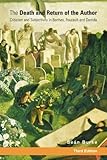
 There have been assaults upon this bastion over the last several decades, yet even while that mélange of neo-orthodoxies that became ascendant in the ’70s and ’80s when English professor was still a paying job are sometimes interpreted as dethroning the New Critics—the structuralists and post-structuralists, the New Historicists and the Marxists, the Queer Theorists and the post-colonial theorists—their success was an ironic confirmation of the staying power of Wimsatt, Beardsley, Brooks, Warren, Richards, Empson, and so on. “Like all schools of criticism, the New Critics have been derided by their successors,” writes William Logan in his forward to Garrick Davis’s Praising It New: The Best of the New Criticism, “but they retain an extraordinary influence on the daily practice of criticism.” After all, when a post-structuralist writes about binary oppositions, there are shades of Empson’s paradox and ambiguity; when Roland Barthes wrote in 1967 that “the reader is without history, biography, psychology” there is a restatement about effect, and that he was writing in a book called The Death of the Author is the ultimate confirmation against intention. And Jacques Derrida‘s deconstruction, that much maligned and misinterpreted word, bane to conservative and balm to radical? It’s nothing more than a different type of close reading—a hyper attenuated and pure form of it—where pages could be produced on a single comma in James Joyce’s Ulysses. We are still their children.
There have been assaults upon this bastion over the last several decades, yet even while that mélange of neo-orthodoxies that became ascendant in the ’70s and ’80s when English professor was still a paying job are sometimes interpreted as dethroning the New Critics—the structuralists and post-structuralists, the New Historicists and the Marxists, the Queer Theorists and the post-colonial theorists—their success was an ironic confirmation of the staying power of Wimsatt, Beardsley, Brooks, Warren, Richards, Empson, and so on. “Like all schools of criticism, the New Critics have been derided by their successors,” writes William Logan in his forward to Garrick Davis’s Praising It New: The Best of the New Criticism, “but they retain an extraordinary influence on the daily practice of criticism.” After all, when a post-structuralist writes about binary oppositions, there are shades of Empson’s paradox and ambiguity; when Roland Barthes wrote in 1967 that “the reader is without history, biography, psychology” there is a restatement about effect, and that he was writing in a book called The Death of the Author is the ultimate confirmation against intention. And Jacques Derrida‘s deconstruction, that much maligned and misinterpreted word, bane to conservative and balm to radical? It’s nothing more than a different type of close reading—a hyper attenuated and pure form of it—where pages could be produced on a single comma in James Joyce’s Ulysses. We are still their children.
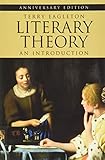

 Though far from an unequivocal celebrant of the New Critics, Terry Eagleton writes in Literary Theory: An Introduction that close reading provided “a valuable antidote to aestheticist chit-chat,” explaining that the method does “more than insist on due attentiveness to the text. It inescapably suggests an attention to… the ‘words on the page.'” Close reading is sometimes slandered as brutal vivisection, but it’s really a manner of possession. In the sifting through of diction and syntax, grammar and punctuation, image and figuration, there are pearls. Take a sterling master—Helen Vendler. Here she is examining Shakespeare’s Sonnet 73, where he writes “In me thou see’st the glowing of such fire/That on the ashes of his youth doth lie.” She notes that the narrator across the lyric “Defines himself not by contrast but by continuity with his earlier state. He is the glowing—a positive word, unlike ruin or fade—of a fire.” Or Vendler on the line in Emily Dickinson’s poem 1779. The poet writes that “To make a prairie it takes a clover and a bee,” and the critic writes “Why ‘prairie’ instead of ‘garden’ or ‘meadow?’ Because only ‘prairie’ rhymes with ‘bee’ and ‘revery,’ and because ‘prairie’ is a distinctly American word.” Or, Vendler, once again, on Walt Whitman, in her book Poets Thinking: Pope, Whitman, Dickinson, Yeats. In Leaves of Grass he begins, “I celebrate myself, and sing myself,” and she observes that “The smallest parallels… come two to a line… When the parallels grow more complex, each requires a whole line, and we come near to the psalmic parallel, so often imitated by [the poet], in which the second verse adds something to the substance of the first.” And those are just examples from Helen Vendler.
Though far from an unequivocal celebrant of the New Critics, Terry Eagleton writes in Literary Theory: An Introduction that close reading provided “a valuable antidote to aestheticist chit-chat,” explaining that the method does “more than insist on due attentiveness to the text. It inescapably suggests an attention to… the ‘words on the page.'” Close reading is sometimes slandered as brutal vivisection, but it’s really a manner of possession. In the sifting through of diction and syntax, grammar and punctuation, image and figuration, there are pearls. Take a sterling master—Helen Vendler. Here she is examining Shakespeare’s Sonnet 73, where he writes “In me thou see’st the glowing of such fire/That on the ashes of his youth doth lie.” She notes that the narrator across the lyric “Defines himself not by contrast but by continuity with his earlier state. He is the glowing—a positive word, unlike ruin or fade—of a fire.” Or Vendler on the line in Emily Dickinson’s poem 1779. The poet writes that “To make a prairie it takes a clover and a bee,” and the critic writes “Why ‘prairie’ instead of ‘garden’ or ‘meadow?’ Because only ‘prairie’ rhymes with ‘bee’ and ‘revery,’ and because ‘prairie’ is a distinctly American word.” Or, Vendler, once again, on Walt Whitman, in her book Poets Thinking: Pope, Whitman, Dickinson, Yeats. In Leaves of Grass he begins, “I celebrate myself, and sing myself,” and she observes that “The smallest parallels… come two to a line… When the parallels grow more complex, each requires a whole line, and we come near to the psalmic parallel, so often imitated by [the poet], in which the second verse adds something to the substance of the first.” And those are just examples from Helen Vendler.
When I queried literary studies Twitter about their favorite close readings—to which they responded generously and enthusiastically—I was directed towards Erich Auerbach’s Dante: The Poet of the Secular (to which I’d add Mimesis: The Representation of Reality in Western Literature); Marjorie Garber’s reading of Robert Lowell’s poem “For the Union Dead” in Field Work: Sites in Literary and Cultural Studies; the interpretation of Herman Melville’s Billy Budd in The Barbara Johnson Reader: The Surprise of Otherness; Shoshana Felman’s paper on Henry James titled “Turning the Screw of Interpretation” in Yale French Studies; Susan Howe’s My Emily Dickinson; Randall Jarry writing about Robert Frost’s “Home Burial” in The Third Book of Criticism; Olga Springer’s Ambiguity in Charlotte Bronte’s Villette; Northrop Frye’s Fearful Symmetry: A Study of William Blake; Vladimir Nabokov on Charles Dickens and Gustave Flaubert in Lectures on Literature; Ian Watt’s The Rise of the Novel: Studies in Defoe, Richardson, and Fielding. Nina Baym on Nathaniel Hawthorne in Novels, Readers, Reviewers: Responses to Fiction in Antebellum America; Minrose Gwin on The Sound and the Fury in The Feminine and Faulkner; Edward Said on Jane Austen’s Mansfield Park in Orientalism; Christopher Ricks’s Milton’s Grand Study (to which I’d add Dylan’s Vision of Sin, which refers not to Thomas but Bob), and so on, and so on, and so on. If looking to analyze my previous gargantuan sentence, just note that I organized said critics by no schema, save to observe how such a diversity includes the old and young, the dead and alive, the traditional and the radical, all speaking to the vitality of something with as stuffy a name as close reading. Risking sentimentality, I’d add another exemplary participant—all of those anonymous graduate students parsing the sentence, all of those undergraduates scanning the line, and every dedicated reader offering attentiveness to the words themselves. That’s all close reading really is.
Naïve to assume that such a practice offers a way out of our current imbroglio. However, when everyone has an opinion but nobody has done the reading, where an article title alone is enough to justify judgement, and criticism tells us more about the critic than the writing, then perhaps slow, methodical, humble close reading might provide more than just explication. Interpretations are multifaceted, but they are not relative, and for all of its otherworldliness, close reading is built on evidence. Poorly done close reading is merely fan fiction. Something profound in acknowledging that neither the reader—nor the author—are preeminent, but the text is rather the thing. It doesn’t serve to affirm what you already know, but rather to instruct you in something new. To not read yourself into a poem, or a novel, or a play, but to truly encounter another mind—not that of the author—but of literature itself, is as close to religion as the modern age countenances. Close reading is the most demonstrative way to experience that writing and reading are their own dimension.
Let’s pretend that you’re a gig worker, and while waiting to drive for Uber or Seamless, you scroll through an article entitled “Nothing Outside the Text.” It begins in the second-person, inserting the reader into the narrative. The author invents a mid-century office worker who is travelling home. Place names are used as signifiers; the author mentions “New Rochelle,” “Hempstead,” and “Weehawken,” respectively in Westchester County, Long Island, and New Jersey, gesturing towards how the city’s workers radiate outward. Sensory details are emphasized—the character buys an “egg-salad sandwich,” and we’re told that he stands near the “display with its ticking symphony,” the last two words unifying the mechanical with the artistic—with the first having an explosive connotation—yet there is an emphasis on regularity, harmony, design. We are given a description of a science fiction magazine the man buys, and are told that he settles into his train seat where the magazine’s “cheap print… smudge[s]” his “gray flannel suit,” possibly an allusion to the 1955 Sloane Wilson novel of that name. This character is outwardly conformist, but his desire to be “immersed in tales of space explorers and time travelers” signals something far richer about his inner life. Finally, if you’re this modern gig worker reading about that past office worker, you might note that the latter is engaging the “sort of reading you’d want to cocoon yourself in, a universe to yourself with nothing outside the text.” And in close reading, whether you’re you or me, the past reader or the present, the real or imagined, all that the text ever demands of us—no more and no less—is to enter into that universe on its own terms. For we have always been, if we’re anything, citizens of this text.
Image Credit: Pixabay









